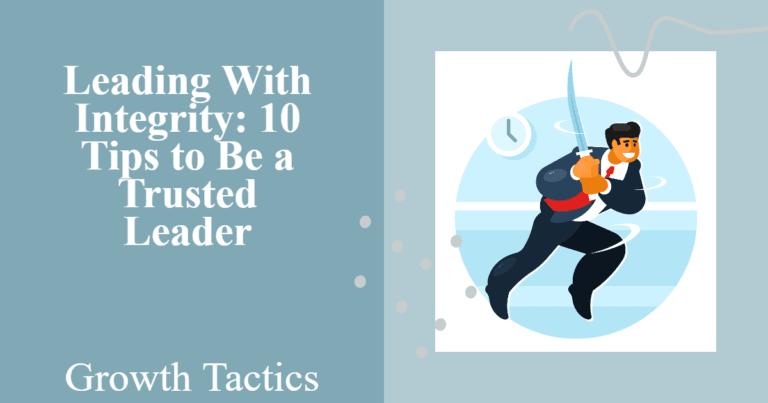If you’re looking for a powerful approach to transforming your personal or professional life, you’ll want to explore the Theory of Constraints (TOC). Originally developed by Eliyahu Goldratt, the TOC offers a unique perspective on identifying and overcoming constraints that limit your growth and potential. This approach has become increasingly popular across a growing variety of fields and industries, from project management and manufacturing to healthcare, education, and more.
In this article, we’ll take a deeper look at the TOC, examining its key concepts and the benefits it can offer. Whether you’re looking to optimize your organization’s performance or improve your own life, the TOC provides an elegant and effective framework for achieving your goals.
Jump To Section
Understanding the Theory of Constraints
At its heart, the TOC is all about identifying and removing bottlenecks that limit a system’s overall performance. This can apply to a wide variety of settings, from the production line of a factory to the assembly of a team for a project. In each of these cases, there is likely to be at least one limiting factor that is holding things back. This presents an opportunity for improvement and growth that the TOC seeks to take advantage of.
The TOC consists of several key ideas. At its core is the idea that every system has at least one constraint that limits its performance. This could be an issue with a process, a person, a resource, or another factor that is causing a bottleneck. By identifying this constraint and working to alleviate it, you can unlock further potential for the system as a whole.
Another core principle of TOC is known as the Five Focusing Steps. This framework involves acknowledging the constraint, determining how it limits the system, developing a strategy for addressing it, reinforcing this strategy, and then repeating these steps as needed. This approach can be scaled to address larger and more complex systems in any industry.
Let’s Get Practical: Five Steps to Success
Life can be tough sometimes. We all face challenges that make us feel stuck. But I’ve found that using these five steps can really help. They’ve worked for me, and I bet they can work for you too.
Step 1: Spot What’s Holding You Back
Look at your life. What’s stopping you? Maybe it’s not enough time or money. Or maybe it’s fear or doubt. Write these things down. Seeing them on paper makes them easier to tackle.
Step 2: Use Your Limits to Your Advantage
Once you know what’s in your way, get creative. I remember when I had no budget for marketing. So, I used social media instead. It worked great! Your limits can push you to find new solutions.
Step 3: Focus on What Matters
Cut out the noise. What really helps you reach your goals? Do those things first. I used to try to do everything. Now, I pick the most important tasks and do them well.
Step 4: Make Your System Better
Always look for ways to improve. Try new tools or methods. Ask for feedback. I started using a new app to manage my time, and it’s made a big difference.
Step 5: Keep Going
Success isn’t a one-time thing. It’s about growing and learning every day. So, start over at step one and keep going. Each time through, you’ll get stronger and smarter.
Remember, you’re unique. Use these steps in a way that works for you. Trust yourself and keep moving forward.
Types of Constraints
Resource Constraints: Fuel for Creativity
One of the most common constraints we encounter is a shortage of resources. Whether it is limited funding, a scarcity of time, or a lack of manpower, resource constraints can initially appear daunting. However, they ignite the flames of creativity within us. When faced with limited resources, we are forced to think innovatively, find alternative ways to accomplish tasks, and maximize the impact of every available resource. By reimagining possibilities, we discover within ourselves untapped reserves of ingenuity and resourcefulness.
Knowledge Constraints: Unlocking New Pathways
In the ever-evolving landscape of our lives, knowledge constraints often arise due to limited information or a lack of expertise in a specific domain. These constraints provide us with opportunities to grow and expand our horizons. Instead of being discouraged by what we don’t know, we recognize the inherent potential to learn, acquire new skills, and tap into the collective wisdom of others. By seeking out knowledge and pursuing continuous learning, we transform constraints into stepping stones toward personal and professional growth.
Time Constraints: Catalyzing Efficiency
Time is a precious resource that seems to slip through our fingers all too quickly. Time constraints test our ability to prioritize, make quick decisions, and optimize the efficiency of our actions. While it may appear as though time is working against us, it propels us toward excellence. By embracing time constraints, we become masters of time management, learning to focus on the most critical tasks, delegating effectively, and leveraging tools and techniques to accomplish more in less time. Let us use time constraints as a catalyst for productivity and remind ourselves of the immense value every moment holds.
Technology Constraints: Empowering Adaptability
In our fast-paced digital era, technology constraints can be both challenging and transformative. It can be frustrating when we lack access to the latest tools or face technical limitations. However, these constraints foster adaptability and empower us to navigate the dynamic realm of technology. As we encounter technology constraints, we become resilient problem solvers, seeking alternative solutions, embracing new platforms, and continuously evolving alongside technology’s rapid advancements. Let us view technology constraints as opportunities to enhance our digital literacy, embrace change, and leverage technology’s immense potential to drive our success.
Limiting Beliefs: Embracing Possibility
Among the various constraints we face, perhaps the most significant are the limiting beliefs we hold within ourselves. These self-imposed constraints hinder our growth, shackle our potential, and prevent us from embracing the possibilities that await us. To overcome these limitations, we must cultivate a mindset of possibility and abundance. By challenging our beliefs, shifting our perspectives, and embracing the notion that anything is achievable, we unleash our true potential. Let us break free from the constraints of our minds and boldly pursue our dreams with unwavering determination.
Applying the Theory of Constraints
So how can the TOC be applied to achieve real results? First and foremost, it’s important to understand that the TOC is a flexible tool that can be tailored to a wide variety of settings. Whether you’re trying to optimize a factory production line, improve your team’s project management process, or grow your personal productivity, the TOC can be a valuable tool to help you succeed.
In each case, the key is to identify the constraints that are limiting your performance. This might involve looking at how you allocate your time, resources, or energy, or taking a closer look at the specific tasks or processes that are taking longer than expected and causing issues downstream.
Once you’ve identified one or more constraints, you can begin to develop a strategy for addressing them. This might involve strengthening or redirecting resources, adjusting your scheduling or planning, or looking for ways to simplify or streamline processes so they don’t get bogged down by the constraint.
Throughout this process, it’s important to be open to change and to stay focused on your strategic goals. The TOC is at its most powerful when it’s used to support continuous improvement and growth, allowing you to unlock new levels of potential and achieve long-term success.
Benefits of the Theory of Constraints
The benefits that the TOC can offer are many and varied. At a fundamental level, the TOC provides a roadmap for organizing and optimizing any system, helping to identify and address constraints that limit efficiency and effectiveness.
Some of the key benefits of the TOC include:
- Improved productivity: By identifying and addressing constraints, you can free up resources and accelerate processes, leading to greater output and overall productivity.
- Enhanced problem-solving: The TOC provides a robust framework for identifying and overcoming obstacles, enabling individuals and organizations to become more effective problem solvers.
- Better strategic planning: By understanding the constraints that limit your potential, you can develop more targeted and effective strategies that align with your goals and priorities.
- Increased collaboration: The TOC encourages a collaborative approach to problem-solving, empowering teams to work together to overcome challenges and achieve shared goals.
- Superior outcomes: Ultimately, the TOC can help you achieve better outcomes across any system, be it personal or professional. By maximizing performance, you’ll unlock new levels of success and growth.
Unleashing Success: Embracing Constraints in Management
In the dynamic world of management, constraints play a vital role in shaping the outcomes we strive for. Simply put a constraint in management refers to any factor that limits the potential of a system, organization, or team to achieve its goals. It might be a shortage of resources, a bottleneck in a process, or any other obstacle that hinders our progress. But rather than viewing constraints as roadblocks, let’s see them as opportunities for growth and innovation.
By recognizing and understanding the constraints we face, we can rise above them and find creative solutions that drive us forward. A key principle to master is the Theory of Constraints (TOC). According to TOC, every manageable system has at least one constraint that holds it back. By identifying these constraints and working to alleviate them, we empower ourselves and our teams to reach new heights of success.
A constraint in management, although initially seen as a challenge, can actually be a catalyst for transformation. It forces us to examine our processes, reassess our strategies, and seek out improvements. With a proactive mindset and a commitment to continuous improvement, we can turn constraints into stepping stones toward even greater accomplishments. So, let us embrace the constraints in management, for they hold the seeds of our future success.
Navigating the Path to Success: Managing Constraints Effectively
Constraints are essential components of any management undertaking, providing valuable insights and opportunities to improve efficiency and effectiveness. To manage constraints effectively, we must first identify and understand them. A constraint could be a limited allocation of resources, a time constraint, or even a bottleneck in a process. By conducting a thorough analysis and pinpointing these constraints, we can develop targeted strategies to overcome them.
Once identified, it’s crucial to develop a comprehensive plan of action. This plan should involve leveraging available resources, reshaping processes, and maximizing our strengths. A collaborative approach, involving all relevant stakeholders, can foster creativity and ensure the success of our endeavors. By aligning our efforts and subordinating subordinate systems to the constraint, we can unleash the full potential of our teams and organizations.
Managing constraints in and beyond management requires adaptability and a growth mindset. As we navigate the path to success, we must continuously monitor our progress, seeking out new constraints that may emerge and addressing them promptly. With diligence and determination, we can transform constraints into catalysts for progress, propelling ourselves toward unparalleled achievements.
Embracing the Power Within: Transforming Constraints into Opportunities
Constraints in management are not barriers meant to hold us back, but rather catalysts that ignite our potential. They challenge us to think differently, to innovate, and to find unique solutions to unlock success. By embracing these constraints, we tap into a wellspring of creativity and resourcefulness that can lead us to groundbreaking achievements.
To harness the power within and transform constraints into opportunities, we must adopt a mindset of abundance and possibility. Embrace the belief that there is always a way forward and that constraints can become launchpads for growth. By encouraging open communication, fostering a supportive environment, and empowering our teams, we create an ecosystem of collective problem-solving where constraints become stepping stones toward greatness.
Remember, as we embark on our management journeys, constraints are not limitations but invitations to the extraordinary. Embrace the challenges, seek out the constraints, and with unwavering determination, we shall unlock the untapped potential within us, transcending boundaries, and achieving unparalleled success. Together, let us embark on this transformative journey and create a world where constraints are seen as the catalysts for our collective growth.
Theory of Constraints Applications
The TOC can be applied in a wide variety of contexts, each providing a unique opportunity to achieve breakthrough results. Here are just a few examples of how the TOC can be used in practice:
Project Management
Managing large-scale projects involves coordinating many moving parts, from resources and budgets to timelines and deliverables. The TOC can help by providing a framework for identifying and addressing constraints that could limit the project’s success. By identifying these constraints early on, project managers can develop more effective plans and strategies to ensure success.
Manufacturing
The TOC has its roots in the manufacturing industry, where it’s especially useful for optimizing the production line. By identifying constraints, manufacturers can adjust their processes to eliminate bottlenecks and streamline production, leading to increased efficiency and output.
Lean Manufacturing
The TOC can be a valuable tool for those looking to adopt the principles of lean manufacturing, which emphasizes streamlined processes and continuous improvement. By identifying constraints and developing strategies to address them, organizations can establish a culture of continuous improvement that drives success.
Healthcare
The TOC has been successfully applied in the healthcare industry to improve delivery times, reduce errors, and optimize patient outcomes. By identifying constraints in workflows and processes, healthcare providers can develop more effective strategies for delivering patient care.
Personal Growth
Finally, the TOC can be applied at the personal level to help individuals achieve their goals and unlock their full potential. By identifying constraints that limit personal productivity or growth, individuals can develop strategies for overcoming these obstacles and achieving long-term success.
Criticisms and Limitations of the Theory of Constraints
While the Theory of Constraints has proven to be a powerful tool for many organizations and individuals, it’s important to acknowledge that like any methodology, it has its criticisms and limitations. Understanding these can help users apply TOC more effectively and realistically.
Oversimplification of Complex Systems
One criticism of TOC is that it may oversimplify complex systems. In reality, organizations and processes often have multiple interacting constraints that can be difficult to isolate and address individually.
Difficulty in Identifying the True Constraint
In some cases, it can be challenging to accurately identify the true constraint in a system. Misidentifying the constraint can lead to wasted efforts and resources focused on the wrong areas.
Resistance to Change
Implementing TOC often requires significant changes in processes and mindsets. This can lead to resistance from employees or stakeholders who are comfortable with existing methods.
Short-Term Focus
Critics argue that TOC’s focus on identifying and addressing immediate constraints may sometimes come at the expense of long-term strategic planning and improvements.
Limited Applicability in Certain Industries
While TOC has been successfully applied in many fields, some argue that its principles may not be as effective in certain industries or types of organizations, particularly those with highly variable or unpredictable processes.
Potential for Creating New Bottlenecks
In some cases, eliminating one constraint can simply shift the bottleneck to another part of the system, potentially creating new problems if not carefully managed.
Understanding these criticisms and limitations can help individuals and organizations apply the Theory of Constraints more effectively, by being aware of potential pitfalls and adapting the approach to their specific contexts.
TOC vs. Other Management Theories: Finding Your Perfect Fit
Let’s look at how TOC compares to some other popular approaches. Remember, there’s no one-size-fits-all solution. Your unique situation might call for a mix of these methods.
TOC vs. Lean Manufacturing
Lean focuses on cutting waste, while TOC zeroes in on constraints. I’ve found that combining these can be powerful. For example, I once helped a company use TOC to identify their main bottleneck, then applied Lean principles to streamline that process. The results were amazing!
TOC vs. Six Sigma
Six Sigma is all about reducing variation and defects. TOC, on the other hand, is about managing flow. In my experience, TOC can help you decide where to apply Six Sigma for the biggest impact. It’s like choosing the right tool for the job.
TOC vs. Agile
Agile is great for adapting quickly, especially in software development. TOC can complement this by helping you identify what’s slowing down your sprints. I’ve seen teams use both to deliver projects faster and with less stress.
TOC vs. Total Quality Management (TQM)
TQM focuses on improving quality across the board. TOC suggests concentrating on the areas that will make the biggest difference right now. I’ve found that TOC can help prioritize where to apply TQM principles for the best results.
Remember, the best approach is the one that works for you and your team. Don’t be afraid to mix and match these theories. The key is to keep learning, adapting, and focusing on what matters most to your success.
Key Takeaways
The TOC is a powerful tool for identifying and overcoming constraints that limit performance and potential. Whether applied in the manufacturing industry or in personal growth, it provides a robust framework for problem-solving, strategic planning, and collaboration. By identifying bottlenecks early on and developing effective strategies to address them, individuals and organizations can achieve better outcomes and unlock new levels of success and growth.
Remember:
- Every system has at least one constraint that limits its performance
- The Five Focusing Steps provide a roadmap for addressing constraints
- The TOC can be applied in a variety of contexts, including project management, manufacturing, healthcare, and personal growth.
- The TOC provides a framework for problem-solving, strategic planning, and collaboration, leading to better outcomes and long-term success.








